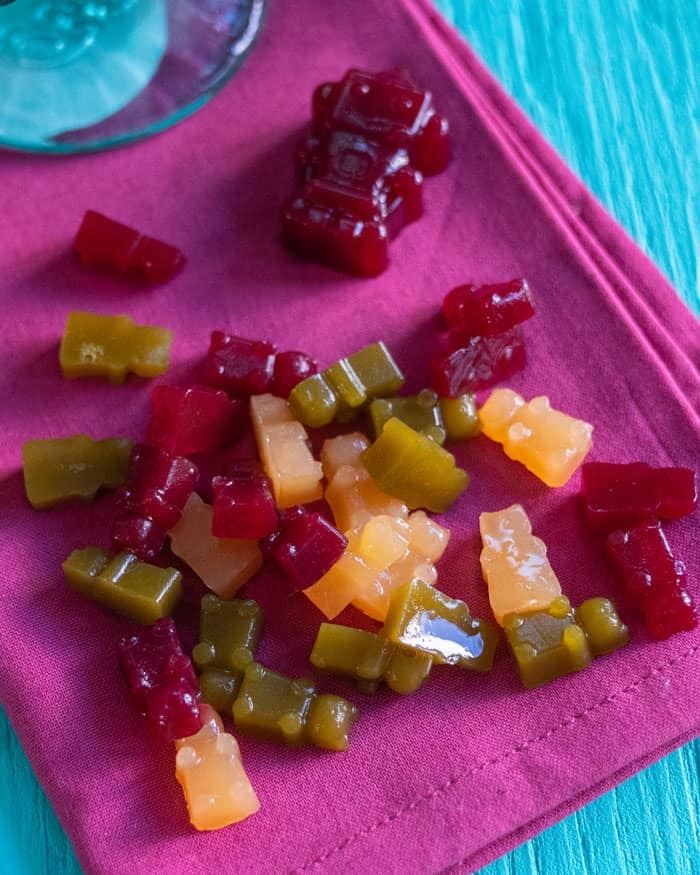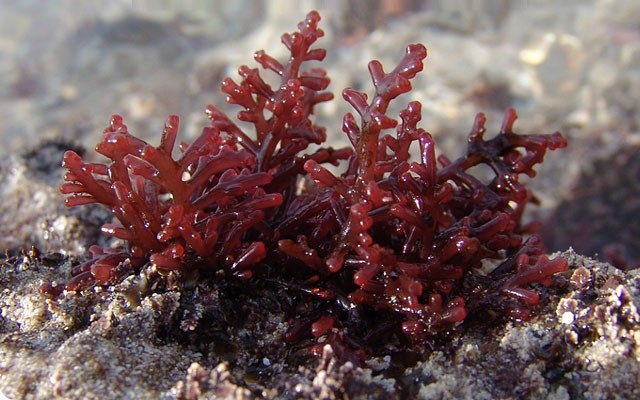On a vegetarian or vegan diet, gelatin enables the creation of a variety of confections. However, it has a hidden flaw: it is derived from animal leftovers. When a prized gummy recipe cannot be manufactured without gelatin, what should an ethical candy maker do? Using carrageenan is therefore the optimal solution.
Carrageenan powder is an ideal replacement for regular gelatin in vegan chewy gummy sweets. It is manufactured from natural seaweed and has a multitude of health advantages! Let’s examine the nutritional value of carrageenan, its health benefits, and its role in vegan gummy sweets.

Carrageenan is a unique food additive that is far more than a substitute for gelatin. It is one of the most potent gelling agents on the planet, enabling the development of vegan Gummy Candies with a texture that was previously only attainable with animal-based gelatin.
The high-shear, heat-induced interaction of carrageenan (CG) with the highly elastic pectin utilized in gummy candies is essential to the food formation of gummy candies. The viscosity, melting temperature, and structure of gels generated by CG and pectin are significantly affected by the kind and quantity of pectin used, the processing conditions, and the interactions between CG and pectin.
What is Carrageenan

Carrageenan, a chemical derived from red seaweed, can be used as a substitute for gelatin in vegan gummy sweets.
Carrageenan is a complex polysaccharide that has been utilized in the food industry for millennia to give yogurt and ice cream a chewy texture. The term carrageenan is derived from the Irish word carriage, which means “small rock.” Carrageenan is derived from Chondrus crispus, a kind of red algae. This seaweed thrives in cold waters and grows on nearby rocks and other surfaces. Since ancient times, it has been used as an ingredient in traditional Asian desserts such as mochi and agar jelly. It is found in many different places in the world.
Carrageenan has been identified by the FDA as a safe additive that can be used to create vegan gummy candies without the addition of any animal products, making it an ideal choice for those who adhere to specific dietary restrictions due to health concerns or religious beliefs regarding what foods are acceptable for consumption (e.g., kosher).
Due to its coagulability, solubility, alkalinity, and other qualities, carrageenan can be employed as a thickening, coagulant, suspending agent, emulsifier, and stabilizer. It has numerous applications in food and other industries.
The usage of carrageenan to produce soft jelly candies has a long history. It has a robust fruit flavor, moderate sweetness refreshing, and non-sticky, so it is quite popular with consumers.
It can be used to create standard fruit jelly candies, upscale fruit jelly candies by adding nutrients or nourishing jelly sweets by adding nutrients.
Components of Vegan Chewy Gummy Candies
Recipe for Vegan Gummy Candies
General Carrageenan Jelly Candy Ingredients:
- Water: 35kg
- Compound Carrageenan Powder: 1.2kg
- Syrup: 60kg
- White Sugar: 40kg
- Acidic Carrageenan Jelly Candy Ingredients:
Water: 35kg - Compound Carrageenan Powder: 1.4kg
- Syrup: 60kg
- White Sugar: 40kg
- Citric acid: 0.5kg
How To Make Vegan Gummy Bears
Premix
First, combine carrageenan and white granulated sugar in the formula at a ratio of 1:4, and then add 35 kilograms of water for 30 minutes of swelling. (White granulated sugar must be pounded into a fine powder before it can be thoroughly combined with carrageenan.)
Dissolving Sugar
Add 60kg of syrup to a jacketed pot or sugar pot, followed by the rest of the white sugar, and heat and stir to around 90 degrees Celsius. Stir as you add the white sugar to prevent lumps.
Melting Process
Add the carrageenan and sugar mixture, which has already expanded, and continue to heat until boiling.
Filtration
A mesh screen is used to filter the sugar solution to remove contaminants
Boil Sugar
After filtration, continue cooking to 106-107 degrees Celsius and remove from heat when the dry matter reaches 75 degrees Celsius.
Acid Adjustment
Dissolve the citric acid in the same volume of water, and when the sugar solution has cooled slightly, combine it with the color and flavoring, stirring carefully.
Injecting Into the Form
Pour the sugar liquid quickly onto a clean cooling plate that has been lightly coated with vegetable oil. The plate should be flat so that the sugar liquid maintains a constant thickness while skimming the air bubbles’ surface. Pouring the pan should be done quickly to avoid the “tail dragging” issue produced by the sugar liquid cooling too quickly.
Cooling
After pouring the sugar liquid into the pan, let it cool naturally until it hardens into jelly.
Forming And Shaping
After the sugar liquid has cooled, cut it into pieces with a well-adjusted knife.
Drying Process
Leave the sugar cubes at regular intervals on a metal plate covered with a tiny amount of oil, and place them in a drying room to dry. The temperature of the drying room is closely controlled between 55 and 60 degrees Celsius, especially in the beginning, to minimize crusting on the surface and impair water distribution. Place in the room for drying for 36 to 48 hours.
Cooling
After approximately four hours of drying, remove and cool to room temperature.
Packaging
Sugar cubes that have been cooled are picked and packed as final products.
Product Benefits
The jelly candy manufactured with carrageenan has the following advantages over other jelly candies:
- Good taste,
- High visibility,
- Brilliant color,
- Low price
Carrageenan offers a broad range of applications, a rapid solidification rate, a short drying time, and is energy efficient.
The production method for carrageenan is straightforward, making it suited for both human and automated continuous production. The development outlook is expansive.
Don’ts and Dos
Carrageenan-based compound jelly candy powder is difficult to dissolve in high sugar concentrations; therefore, it is advised to dissolve it with water first. Otherwise, it is straightforward to manufacture “trachoma,” or small colloidal particles one at a time.
Concentrate on minimizing sugar content. If the reducing sugar concentration is too high, it is easy to fail while pouring into the mold. If the reducing sugar content is too low, the storage duration is lengthy and it is easy to return to sand (not forming, drawing).
Possible causes for failure to form or draw:
Possible Cause Solution
Too Long Cooking Time
The longer the duration, the higher the likelihood that the colloid will be destroyed. Generally, the temperature can reach 107 degrees, except while pouring jelly sweets.
Too Little Water Content
Due to the low initial water concentration, the colloid does not completely dissolve. It is advised to swell the colloid with water before use (not necessary). Do not add too little water; approximately 30% is suggested. After cooking, there is little water, and the colloid lacks sufficient water to form a gel. This is a rare occurrence.
The Acid Syrup Causes the Overall Environment to Be Acidic
At high temperatures, acidity can quickly destroy colloids (except pectin), resulting in insufficient quantities of colloids to form a gel. It is advised to inject acid at the final stage, particularly before filling the mold. In addition, the acid must be dissolved in water before being added, and it must be mixed swiftly when introduced. Add sodium citrate (potassium) to adjust the syrup’s ph level. If the jelly candy is not sour, you can add more, such as 0.1-0.4%; if it is sour sugar, add 0.08-0.2%.
Low Quantity of Colloid
It is relatively uncommon. In general, a tiny amount of colloid will produce a slightly soft flavor. If the drying temperature or time is too high or too lengthy, wire drawing will occur after drying.
 One-Stop Solution Manufacturer of Gummy Making Machine
One-Stop Solution Manufacturer of Gummy Making Machine